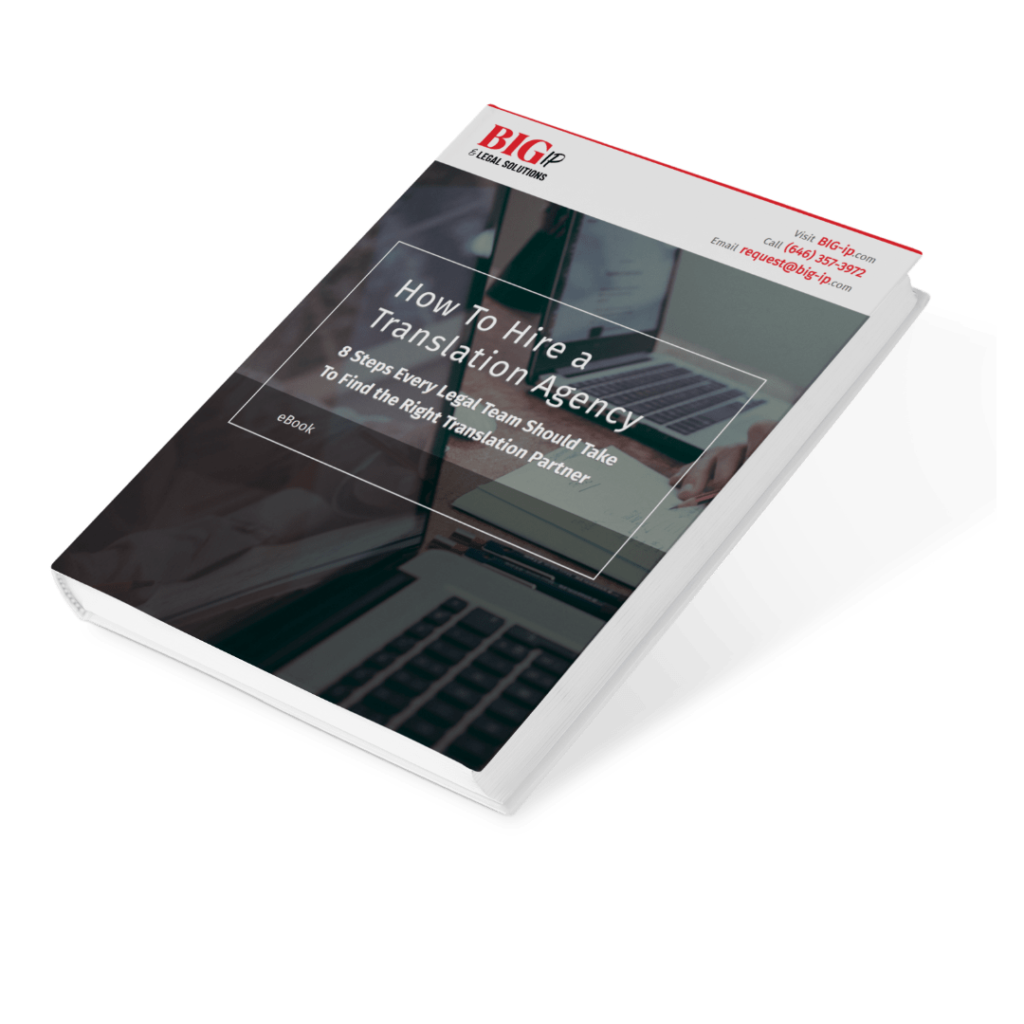
No matter the specific need or challenge facing the in-house legal department or law firm, legal translation is a high-risk and demanding process. It has also become an increasingly important discipline in today’s globalized economy. Fortunately, it is much easier these days for law firms and their clients to avoid costly – and embarrassing – translation errors, as BIG IP Language Solutions’ David Pace explains.
In matters of the law, interpretation and nuance are key. Legal language is not ‘ordinary’ language, and the vocabulary and terminology (or ‘legalese’) used, whether general or specific, can make all the difference when it comes to defining meaning and avoiding ambiguity.
Business is global, but legal systems are not
Little about the law is simple, but international law is increasingly complex and extends into so many different areas and disciplines.
The stranded Evergreen container ship, which blocked passage in Egypt’s Suez Canal in March, provides a recent topical example. For, while most people will have watched with interest the efforts to salvage and move the ship, maritime lawyers and insurers will have viewed it from a completely different perspective.
With 12% of global trade carried through the canal and the blockage estimated to have cost USD 400 million an hour, it was only a matter of time before the legal and insurance claims began after the ship was finally freed. But, the question of who should pay for what will hinge on a variety of contracts, agreements, and treaties, including those of the ship’s owner, Shoei Kisen Kaisha of Japan, Evergreen Marine, the Taiwanese firm that operates the ship, the Suez Canal Authority, and insurers based in Japan and the UK.
In cases involving multiple parties, one of the biggest challenges for legal teams is simply understanding what exists, whether in contracts or correspondence. Add to that, multiple languages and the need to ensure accurate translations, and it is little wonder that the claims in Evergreen are expected to take years to resolve.
The need to establish liability, manage risk, qualify ownership or ensure compliance is at the core of many legal documents. Achieving those objectives in a single language takes considerable skill; achieving it in multiple languages increases the challenge manifold.
Whether related to contracts or tenders, licensing or distribution agreements, acquisitions, or litigation, the demand for multilingual translations is growing, adding new complexity to the typical day-to-day operations of in-house legal departments and their external law firms.
In today’s globalized economy, not only can this challenge not be avoided, but it should also be embraced.
Managed effectively, it can allow in-house legal departments to expand and streamline their operations globally, supporting business growth while minimizing risk. For law firms, it offers the opportunity to grow their businesses and extend their reach in line with the needs of their customers. To achieve this, however, legal departments and law firms need the right support.
Adding peace of mind
Legal documents are specialized and highly confidential by their very nature. To translate them to local languages, often in short timeframes, requires a high level of knowledge of relevant laws and regulations, including how to overcome potential discrepancies in the law and practice of the local country with that of the originating country.
An example of this might be differences in disclosure rules or sensitivity issues when it comes to vocabulary or tone of voice. Likewise, the discipline of translating claims for patent filings is very different from that of translating supplier contracts, and the regulatory requirements for global compliance and commercial litigation differ drastically again. The originator of each type of legal text will have had extensive training and practice in the specific field, so that same level of detailed knowledge must be held by its translator, too.
It goes without saying that translators require legal training and experience to fulfill this role, and should meet the highest standards for confidentiality, including adherence to the relevant professional codes of ethics. But, ongoing training is important too. The laws and systems of countries or regions are not set in stone, but instead are always evolving – changed and updated little by little as a result of jurisprudence, new legislation, regulations, or the introduction of new formalities.
High stakes for easy errors
The risk of error is high in every field, but particularly so in a sector that is as fast-paced and deadline-driven as the field of law. Even minor mistakes or mistranslations can result in damage to a business and its interest, as well as legal exposure and liability for law firms, from lawsuits and malpractice claims to loss of revenue, clients, and reputation.
Even a single error in wording in a case, claim, or clause can impact a party’s ability to uphold its rights should it come to a dispute, and can also cause confusion or miscommunications when it comes to fulfilling contracts, enforcing compliance, or acquiring assets. Unfortunately, however, low-quality translations abound and faults are often not identified until it is too late.
Using a specialist provider will help law firms to mitigate that risk, but it is important to note that not all legal translation specialists are created equal. For this reason, it is vital to partner with a vendor that understands the specific areas of law, has the related technical and regulatory knowledge and upholds its network of global translators to the highest quality standards.
Quality assured
BIG IP Language Solutions supports law firms and in-house legal departments to fulfill a wide range of translation requirements across diverse practice areas from M&A to maritime law. Our command of legal terminology spanning multiple practice areas in more than 200 languages guarantees we deliver the translation support legal professionals need to handle cross-border legal matters.
A trusted methodology
Each legal translation begins with an experienced linguist with an advanced degree in the specific subject matter. The translation is independently reviewed for syntax and grammar by a linguist who holds an advanced degree in the relevant field and then checked by an in-country attorney or subject matter expert to ensure technical accuracy and adherence to the local laws and practices (e.g. for patent filing). Finally, a dedicated project manager packages and delivers the translation in accordance with client instructions.
We require all linguists to pass a robust proficiency test that is overseen by our senior in-house team. Less than 6% of candidates pass this initial stage, and it is followed by additional rounds of interviews and tests specific to their educational background, language and translation proficiency, and area of industry expertise. At a minimum, linguists must have translation certificates or a degree at the time of hire and will undergo ongoing training, testing, and auditing once they join our global team.
Find out more at https://big.ip.com/our-story.








